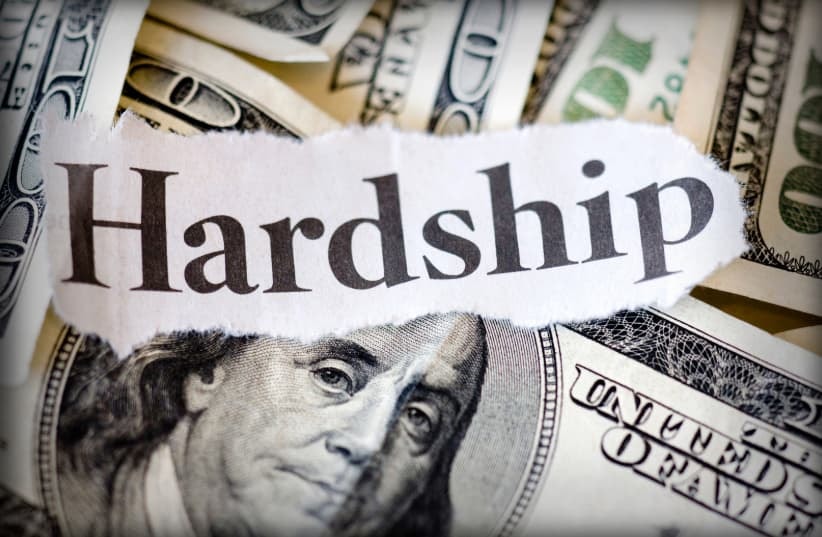Life can change in an instant—whether it’s an unexpected medical bill, the loss of a job, or another personal crisis. When financial hardship strikes, many individuals find themselves struggling to cover basic needs like housing, food, or utilities. In these situations, hardship grants can be a lifeline.
A hardship grant is a type of financial assistance designed to help people through emergencies. Unlike loans, these grants don’t have to be repaid, making them one of the most valuable resources during difficult times. Programs exist at the local, state, and national levels to support people facing financial strain, offering relief for essential expenses when other options fall short.
In this guide, we’ll explore different types of hardship grants for individuals, including those available to single mothers, the unemployed, and individuals with disabilities. We’ll also explain how a hardship relief program works, what to expect when applying, and where to find legitimate support without falling for scams.

What Are Hardship Grants & Relief Programs?
When people face sudden financial struggles, they often look for emergency assistance to cover essential needs. This is where hardship grants and relief programs come in. These forms of support are designed to provide temporary financial help for individuals and families going through difficult times.
Hardship Grants for Individuals
A hardship grant is direct financial assistance given to people in crisis. Unlike loans, these grants don’t require repayment, making them especially helpful when money is already tight. Hardship grants for individuals may come from nonprofit organizations, community programs, or government-backed initiatives.
What Is a Hardship Relief Program?
A hardship relief program is a broader system of support that may include grants, services, and other resources to help people meet their basic needs. Relief programs are often managed by charities, state agencies, or local governments, and they may provide a combination of financial aid, food assistance, housing support, or medical bill relief.
Understanding Hardship Funds
A hardship fund is typically set up by organizations, schools, employers, or charities to help people within a specific community. For example, universities may offer hardship funds for students, while workplaces sometimes create funds to support employees during emergencies.
How Hardship Grants Differ From Loans or Other Aid
The biggest difference between a financial hardship grant and a loan is repayment. Grants are awarded as a gift to cover urgent needs, while loans must be repaid with interest. Other types of financial aid—like unemployment benefits or food stamps—may have strict eligibility requirements, while hardship grants are often more flexible in covering unexpected expenses.
Expenses Covered by Hardship Grants
While every program is different, hardship grants typically cover:
-
Housing costs – rent, mortgage, or emergency shelter
-
Utility bills – electricity, water, gas, internet
-
Medical expenses – hospital bills, prescriptions, medical equipment
-
Food and basic needs – groceries, meals, clothing
-
Disaster relief – support after fires, floods, or other emergencies
These grants aim to provide short-term stability so individuals can recover and get back on their feet.

Who Offers Hardship Grants?
Hardship grants and relief programs are available from a wide range of sources, including government agencies, nonprofits, and community organizations. While the federal government does not typically hand out direct cash hardship grants for individuals, there are many programs and organizations designed to help cover essential needs.
Federal & Government Programs
Although there are no direct federal hardship grants for individuals, several government programs provide financial relief and essential services:
-
SNAP (Supplemental Nutrition Assistance Program): Helps cover food costs.
-
Medicaid: Provides healthcare coverage for low-income individuals and families.
-
Section 8 Housing Vouchers: Assists with affordable housing and rent support.
-
TANF (Temporary Assistance for Needy Families): Offers financial help for low-income families, particularly single mothers.
-
Unemployment Benefits: Provides income replacement for those who have lost their jobs.
These programs function as a hardship relief program for struggling households, ensuring basic needs like food, shelter, and healthcare are met.
National Nonprofits & Charities
Many national organizations offer financial hardship grants and direct aid:
-
United Way: Provides local assistance with food, utilities, housing, and emergency needs.
-
Catholic Charities and Jewish Federation: Offer support with rent, medical bills, food, and other essentials.
-
Habitat for Humanity: Helps families with housing, home repairs, and shelter solutions.
-
Modest Needs Foundation: Provides small hardship grants to cover emergency expenses for working individuals and families.
-
Operation Homefront: Supports military families with financial assistance, housing, and food programs.
Disaster & Emergency Relief
When natural disasters or emergencies strike, immediate financial and resource-based aid is available through:
-
FEMA (Federal Emergency Management Agency): Provides emergency relief for disaster victims.
-
American Red Cross: Offers temporary housing, meals, and recovery assistance.
-
Local Community Organizations: Many local nonprofits and city programs provide emergency hardship funds during crises.
Special Population Grants
Certain groups may qualify for hardship grants tailored to their needs:
-
Single Mothers: Women’s foundations, maternal health programs, and child care support funds often provide grants specifically for mothers raising children alone.
-
Individuals with Disabilities: Programs such as Social Security Disability (SSI), disability advocacy groups, and medical expense assistance funds.
-
Veterans and Students: The Department of Veterans Affairs, military relief societies, Pell Grants, and Iraq & Afghanistan Service Grants help cover education and living costs.
-
Retirees and Seniors: Programs like Social Security, Medicare, and Medicaid support older adults facing financial hardship.

How to Find the Right Hardship Grant
Finding the right hardship grant can feel overwhelming, but there are trusted resources and strategies to help you identify legitimate programs that meet your needs.
Use Official Directories
Government directories are one of the best places to start your search. These platforms provide up-to-date listings of grants, benefits, and financial assistance programs:
-
Grants.gov – A database of federally funded grants, including those related to housing, healthcare, and education.
-
USA.gov – A central hub for government resources, including links to emergency financial assistance and hardship relief programs.
These sites are free to use and help you avoid scams by ensuring you’re applying to legitimate programs.
Explore Local Social Services and Nonprofits
Beyond federal programs, many hardship funds are available at the state and local level. Contact:
-
Local social services offices for rental, food, and utility assistance.
-
Community action agencies that administer hardship relief programs for low-income families.
-
Nonprofit organizations and charities in your area that provide targeted grants for housing, medical bills, or emergency expenses.
Consider Crowdfunding as a Supplement
While applying for traditional financial hardship grants, you can also seek support through crowdfunding. Platforms like *spotfund make it easy to share your story, reach donors online, and raise money quickly for urgent needs. Crowdfunding can act as a bridge while waiting for grant applications to be processed, providing immediate financial relief during emergencies.
👉 Start your *spotfund campaign today and get the immediate support you need while waiting for hardship grant approval.

Application Process: Steps to Apply Successfully
Applying for a hardship grant can be competitive, so it’s important to follow each step carefully to increase your chances of approval. Most programs look for clear evidence of financial need, so being prepared makes the process smoother.
Step 1: Identify Eligibility
Before applying, review the requirements of each program. Some grants are designed for specific groups such as single mothers, the unemployed, or individuals with disabilities. Make sure you qualify before spending time on an application.
Step 2: Gather Documentation
Most hardship relief programs require proof of your situation. Common documents include:
-
Income statements or pay stubs
-
Utility bills, rent notices, or mortgage statements
-
Medical bills or prescription receipts
-
Eviction or foreclosure notices
-
Proof of unemployment or disability status
Having these documents ready ensures you can apply quickly and accurately.
Step 3: Submit Accurately
When filling out applications, double-check all information to avoid delays or rejections. Pay close attention to:
-
Application deadlines
-
Required forms or attachments
-
Program-specific instructions
Some programs will not review incomplete applications, so accuracy and timeliness are key.
Step 4: Follow Up Proactively
After submitting, don’t hesitate to follow up with the organization to confirm your application was received. Many hardship funds and nonprofits experience high demand, so checking on your status shows initiative and ensures your application isn’t overlooked.

Watch Out for Scams
Unfortunately, not every offer of a hardship grant is legitimate. Scammers often target individuals in financial distress, making it essential to know the warning signs of fraudulent programs.
Avoid Upfront Fees
Legitimate hardship relief programs never ask you to pay money to apply or receive funds. If a website or individual demands an application fee, processing fee, or “unlock” payment, it’s a clear red flag.
Be Wary of “Guaranteed Approval”
No authentic grant program guarantees funding without reviewing eligibility criteria. If you see claims like “everyone qualifies” or “instant approval,” it’s likely a scam designed to collect personal or financial information.
Watch Out for Fake Government Sites
Scammers often create websites that look like official portals but aren’t connected to real agencies. They may copy logos or use government-like URLs to trick applicants. Always double-check the web address before entering your personal information.
Verify Through Official Portals
To stay safe, only use trusted resources such as:
-
Grants.gov – The official database of federal grant opportunities.
-
USA.gov – The U.S. government’s central information hub.
By sticking to verified sources, you can avoid scams and focus on finding genuine financial hardship grants that provide real support.

Alternative Aid Options When Grants Aren’t Available
Not everyone will qualify for a hardship grant, and sometimes funding runs out quickly. If you’re unable to secure a grant, there are other forms of financial assistance available to help during tough times.
Hardship Loans
For urgent expenses, some individuals turn to hardship loans. These may include:
-
Personal loans from banks or credit unions
-
Bad-credit loans for those with limited credit history
-
Government-backed loans with lower interest rates
While loans can provide fast access to cash, remember they must be repaid with interest, so they should be considered carefully.
Community Support Programs
Local communities often provide immediate assistance when grants aren’t available. Examples include:
-
Food banks that supply groceries for families in need
-
Shelters offering temporary housing and emergency resources
-
Utility assistance programs to help cover electricity, water, or heating bills
Crowdfunding With *spotfund Online Platform
If traditional aid isn’t enough, consider starting a campaign through *spotfund, a free crowdfunding platform designed for individuals and nonprofits. With *spotfund, you can:
-
Share your story online and reach donors quickly
-
Raise money for urgent needs like housing, medical bills, or childcare
-
Create team fundraisers to gather community support
Crowdfunding with *spotfund can act as a bridge while waiting for official aid or provide additional relief when hardship grants and loans aren’t enough.
👉 Launch your free *spotfund campaign today to get fast, secure support for your urgent needs and rally your community around you.
Conclusion
Facing financial difficulties can be overwhelming, but resources are available to help ease the burden. From government hardship grants that cover basic needs, to personal hardship grants offered by nonprofits and charities, there are many forms of support for individuals and families in crisis. In addition, state and local governments often provide relief programs and hardship funds tailored to community needs, ensuring help is available close to home.
While applying for these programs is an important step, it may take time to receive approval. That’s why many people turn to crowdfunding as a way to bridge the gap.

